Depending on which Saleae Logic Analyzer you have, you may not have to do that much.
We have more information on this exact situation here:
http://support.saleae.com/hc/en-us/articles/200591545-How-can-I-connect-to-a-high-voltage-TTL-signal-such-as-24V-serial-
The older products, Logic and Logic16, will require some basic protection. The new products, however, are over voltage protected to +/- 25 volts, so can connect RS-232 directly to the inputs.
The original Logic's input is a 500 ohm series resistor followed by and ESD clamp. The 500 ohm resistor limits the current a little when the input voltage goes out of range, but the ESD clamp can't take much.
Logic 16's input starts with a compensated divider, so that the ESD clamp is protected by a large resistance at DC. (north of 170 K)
For low speed signals like RS-232, I usually recommend adding a 10 K resistor in series with the input and nothing else. this limits the clamping current through the ESD clamps considerably, but at the same time creates a strong low-pass filter effect, so it won't work with signals above about 100 KHz.
Clamping, like in the other answer, is a good solution too - especially when you're working with higher speed signals.
